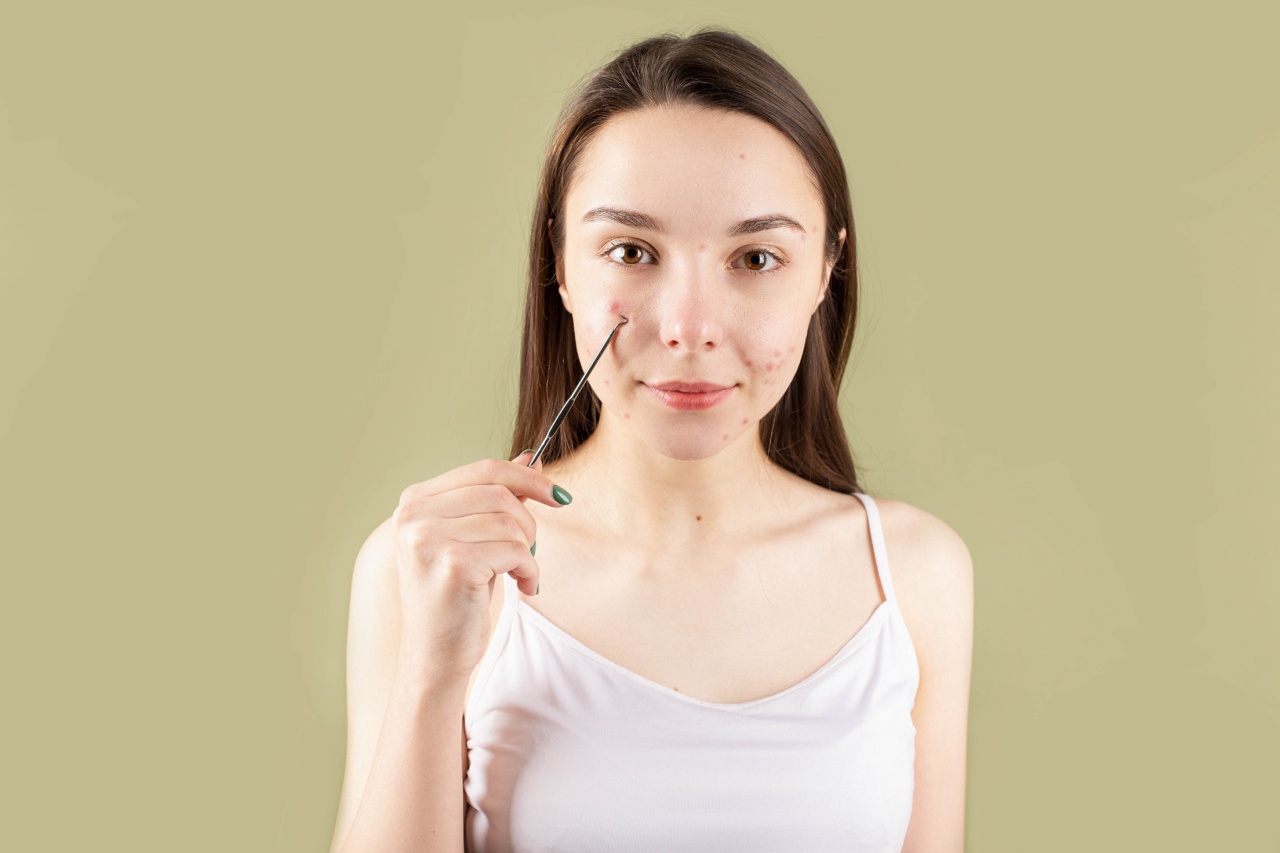Acne, a common skin condition that often appears on the face, can be quite frustrating when it starts to appear on the chin. Not only is it painful, but it can also be embarrassing.
The chin is a common area for acne to appear because of the high number of oil glands in the area. In this article, we will discuss the causes of chin acne and the different treatment options available to help get rid of it.
Causes of Chin Acne
There are several causes of acne on the chin, including:.
1. Hormones
Hormonal changes are one of the biggest culprits of chin acne. During puberty, estrogen levels decrease, while androgen levels increase. Androgens stimulate oil glands to produce more sebum, which can lead to clogged pores and acne breakouts.
2. Diet
Another factor that can contribute to chin acne is a poor diet. Consuming a lot of sugary, fatty, and processed foods can cause a spike in insulin levels, which can lead to inflammation and acne breakouts.
Dairy products, in particular, have been linked to an increase in acne breakouts because of the hormones present in milk.
3. Poor Skincare Habits
Not washing your face properly or using harsh products on your skin can also contribute to chin acne. When you don’t wash your face properly, dirt and oil can build up on your skin and clog your pores, leading to acne breakouts.
Harsh skincare products can strip your skin of its natural oils, causing it to produce more oil to compensate.
Treatments for Chin Acne
1. Topical Treatments
One of the most common forms of treatment for chin acne is topical treatments. These are creams, gels, or lotions that you apply directly to your skin. Some examples of topical treatments include:.
a. Benzoyl Peroxide
Benzoyl peroxide is a popular acne-fighting ingredient that works by killing acne-causing bacteria and drying out excess oil. It is available over-the-counter in various strengths. Start with a lower strength and gradually increase if needed.
b. Salicylic Acid
Salicylic acid works by exfoliating dead skin cells, which can clog pores and lead to acne. It is also available over-the-counter and is found in many acne-fighting skincare products.
c. Retinoids
Retinoids are derivatives of vitamin A and work by unclogging pores and promoting skin cell turnover. They are available in various strengths, with higher strengths requiring a prescription from a dermatologist.
2. Oral Medications
If your chin acne is severe or persistent, your dermatologist may recommend oral medications. These are prescription medications that you take by mouth. Some examples of oral medications include:.
a. Antibiotics
Antibiotics work by killing acne-causing bacteria and reducing inflammation. They are often prescribed for moderate to severe acne.
b. Birth Control Pills
Birth control pills can help regulate hormone levels in women, which can help reduce acne breakouts. They are often prescribed in combination with other acne treatments.
3. Lifestyle Changes
Making changes to your diet and skincare routine can also help reduce chin acne. Some things you can do include:.
a. Eating a Healthy Diet
Eating a diet rich in fruits, vegetables, whole grains, and lean protein can help reduce acne breakouts. Avoid foods that are high in sugar, fat, and processed ingredients.
b. Using Gentle Skincare Products
Use gentle skincare products that do not contain harsh ingredients that can strip your skin of its natural oils. Avoid scrubbing your skin too aggressively, and always remove your makeup before bed.
c. Managing Stress
Stress can contribute to breakouts, so find ways to manage your stress levels. Some things you can do include yoga, meditation, and regular exercise.
Conclusion
Chin acne can be frustrating, but there are many treatments available to help get rid of it. Whether you choose topical treatments, oral medications, or lifestyle changes, be patient and give your chosen treatment time to work.
Always speak with your dermatologist before starting any new treatments and follow their recommendations for the best results.































